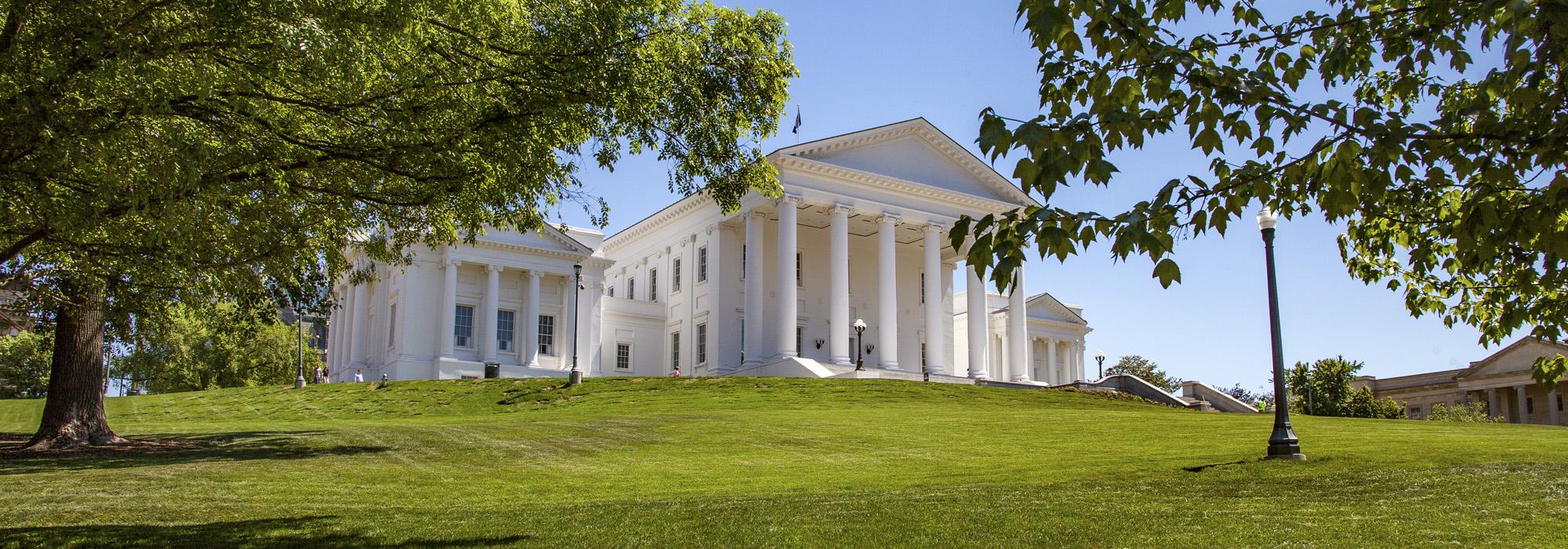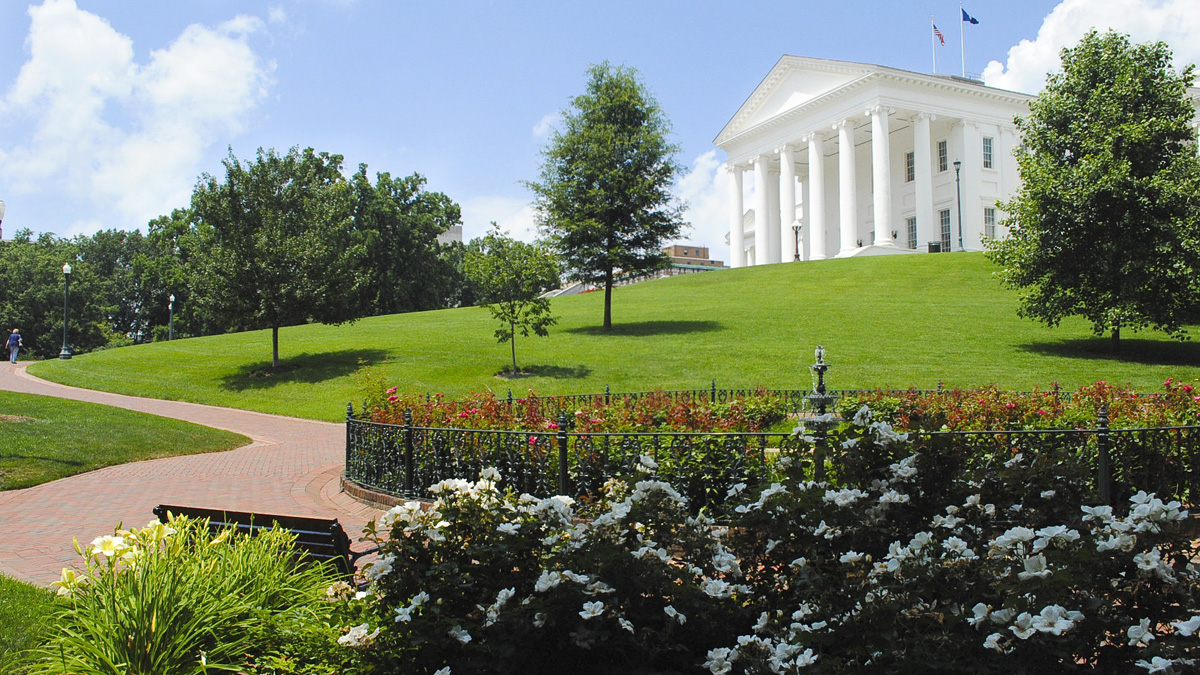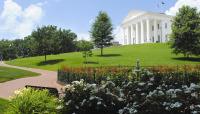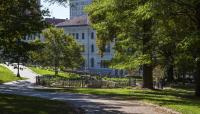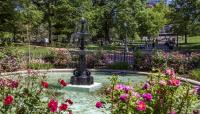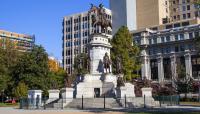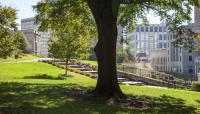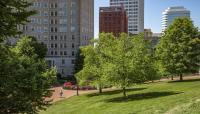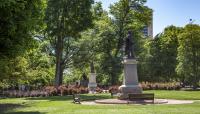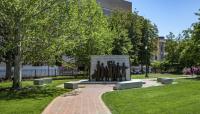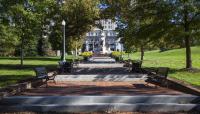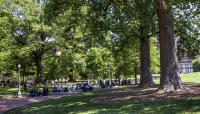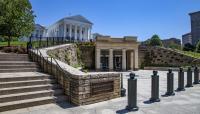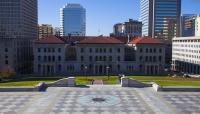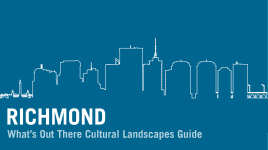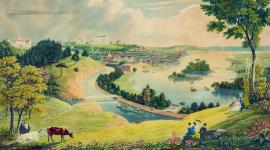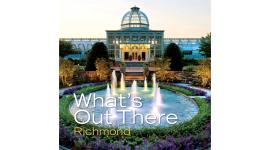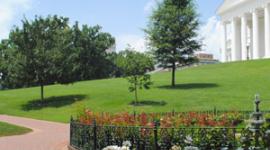Landscape Information
When Virginia’s government was moved from Williamsburg to Richmond in 1780, Thomas Jefferson chose a gently-sloping knoll atop Shockoe Hill for his classical Capitol building. The street-bound, twelve-acre grounds surrounding the Capitol were dedicated the "Public Square" by 1798, and the City of Richmond assumed ownership in 1804. The treeless, weedy lot was first improved by Maximilian Godefroy between 1816 and 1820; he designed a formal public space with walkways, fountains, terraces, and orthogonal tree plantings typical of eighteenth-century French gardens, all enclosed with 3000 linear feet of decorative wrought-iron fencing commissioned from Paul Sabbaton.
This formal landscape was disturbed with the erection of the monument to George Washington by Thomas Crawford in 1850. In 1851, the city hired John Notman to redesign the grounds as an English park. Completed in 1859, Notman’s design incorporated meandering walks, two new fountains, and a planting scheme of native trees. He also increased public access to the space by adding ten additional gates to Sabbaton’s perimeter fence.
Over the course of the nineteenth and twentieth-centuries, monuments, memorials, and buildings have been added to the site. A master plan drafted in 1952 envisioned a hemi-arc of white, International-Style high-rise buildings framing the Capitol on the east; only a portion of this Modernist vision was realized due to community backlash and financial constraints. In 2007, a major underground extension to the Capitol was added to the southwestern edge of the square. The Capitol was designated a National Historic Landmark in 1960.



